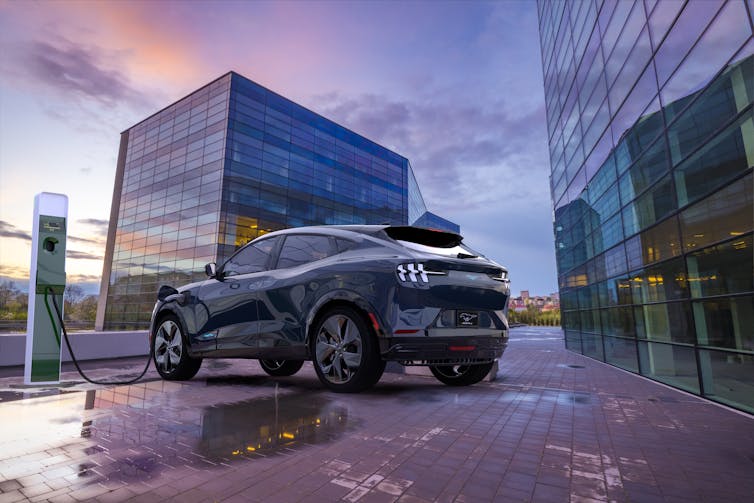Why surging sales of large electric vehicles raises environmental red flags
Why surging sales of large electric vehicles raises environmental ... The Conversation


Electric SUVs and the Challenges for Sustainable Development Goals
Electric cars are getting bigger and heavier. In 2019, 30% of the electric vehicle (EV) models available worldwide were sports utility vehicles (SUVs).
Fast forward to 2022 and that figure stood at 40% – equivalent to the share of small and medium car options combined. Other large models accounted for more than 15%.
There’s an issue with this. Larger and heavier EVs require bigger batteries to power them. In fact, the battery of an SUV can be double the size of that in a smaller vehicle.
As with many other batteries, the lithium-ion cells that power the majority of electric vehicles rely on raw materials such as cobalt, lithium and nickel. In a standard 60 kWh lithium-ion battery pack designed for smaller EVs, there can be as much as 170kg of minerals, including 39kg of nickel and 5kg of lithium.
Batteries for electric SUVs demand that up to 75% more raw materials are extracted from the environment than this.
Potential Shortages in Battery Materials
However, research suggests that there could be shortages in the supply of battery materials in the future. By 2030, there could be a 55% less lithium and 8% less nickel and manganese than is needed to meet the demand for EV batteries.
If the demand for electric SUVs continues to increase over the coming decade, this could severely escalate the pressure on the already tight supply of critical raw materials.

Environmental Impact and Carbon Intensity
The production of batteries is also a highly carbon-intensive process, with emissions increasing as batteries grow in size. For example, the CO₂ emissions resulting from materials processing and battery manufacturing can soar to levels 70% higher for electric SUVs compared to smaller EVs.
Mining activities have been linked with several negative environmental effects too. For instance, one study found that lithium mining activities in the Salar de Atacama – Chile’s largest salt flat – have disturbed flamingo breeding sites and reduced the birds’ access to food and water.
Expanding mining operations to support the growing SUV market could lead to further habitat destruction, excessive water consumption, increased mining waste and heightened risks to local biodiversity.
Behold! This splendid article springs forth from the wellspring of knowledge, shaped by a wondrous proprietary AI technology that delved into a vast ocean of data, illuminating the path towards the Sustainable Development Goals. Remember that all rights are reserved by SDG Investors LLC, empowering us to champion progress together.
Source: theconversation.com
Join us, as fellow seekers of change, on a transformative journey at https://sdgtalks.ai/welcome, where you can become a member and actively contribute to shaping a brighter future.
 SDG 12: Responsible Consumption and Production
SDG 12: Responsible Consumption and Production
Target 12.5: By 2030, substantially reduce waste generation through prevention, reduction, recycling, and reuse.
Proportion of recycled materials in new EV batteries
SDG 13: Climate Action
Target 13.2: Integrate climate change measures into national policies, strategies, and planning.
Carbon intensity of the electricity supply
SDG 15: Life on Land
Target 15.1: By 2020, ensure the conservation, restoration, and sustainable use of terrestrial and inland freshwater ecosystems and their services.
Negative environmental effects of mining activities on habitats, water consumption, mining waste, and biodiversity








